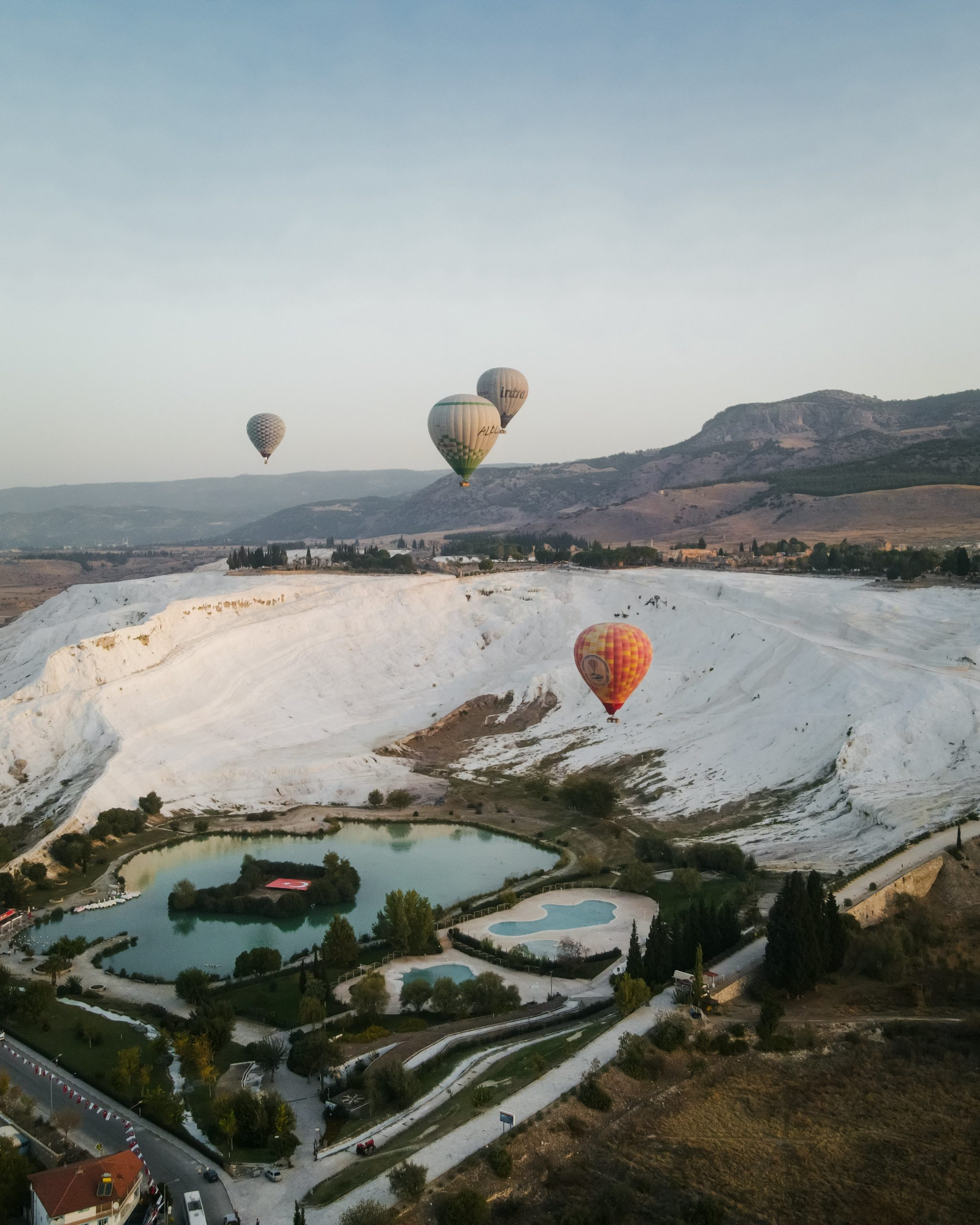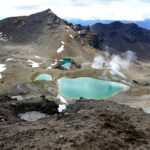Embark on an unforgettable adventure through the breathtaking landscapes of New Zealand with the Tongariro Crossing. This remarkable journey takes you through a diverse range of natural wonders, from majestic volcanoes to serene alpine meadows. Prepare to be enchanted by the stunning beauty around every corner as you immerse yourself in the awe-inspiring scenery. Whether you’re a nature enthusiast or simply seeking an escape from the ordinary, the Tongariro Crossing promises to be an experience that will leave you in awe. So put on your hiking boots, pack your camera, and get ready to discover the wonders of this extraordinary trail.

Understanding Tongariro Crossing
The Tongariro Crossing is a renowned hiking trail located in the Tongariro National Park on the North Island of New Zealand. It spans approximately 19.4 kilometers and takes hikers through a diverse and awe-inspiring range of landscapes, including volcanoes, lakes, and expansive valleys. The significance of the Tongariro Crossing lies not only in its stunning beauty but also in its cultural and spiritual importance to the Maori people.
Location and Significance of Tongariro Crossing
Situated within the Tongariro National Park, the Tongariro Crossing is part of the Taupo Volcanic Zone, which is a region known for its geothermal activity and volcanic features. The park itself is a dual World Heritage site recognized for both its natural and cultural value. This makes the Tongariro Crossing not only a popular hiking destination but also a significant site for conservation and preservation.
History and Cultural Importance of Tongariro Crossing
The Tongariro National Park holds immense cultural and spiritual importance for the Maori people, who have occupied this land for centuries. Mount Tongariro and its surrounding landscapes are woven into ancient Maori legends and traditions. The park is believed to be the resting place of the demigod Maui, who played a crucial role in the creation and shaping of New Zealand’s landscape.
Planning the Trek
Before embarking on the Tongariro Crossing, it is essential to plan your trip carefully to ensure a safe and enjoyable experience.
When to Visit Tongariro Crossing
The best time to hike the Tongariro Crossing is during the summer months, from October to April, when the weather is milder, and the trail conditions are generally more favorable. Outside of this period, weather conditions can be unpredictable, with snow and strong winds posing potential dangers.
Required Permits and Fees
To hike the Tongariro Crossing, you need to purchase a permit known as the Tongariro Alpine Crossing Transport and Parking fee. This permit helps manage the environmental and cultural impacts caused by the significant number of visitors to the area.
Understanding the Physical Intensity of the Trek
The Tongariro Crossing is a challenging trek that requires a reasonable level of fitness and stamina. The terrain can be rugged and steep at times, and hikers should be prepared for an elevation gain of approximately 760 meters. It is crucial to be aware of your limitations and ensure you are physically prepared before attempting the trek.

Packing for Tongariro Crossing
Proper packing is crucial to ensure your safety, comfort, and enjoyment during the Tongariro Crossing. Here are some essential items to consider including in your backpack:
Suggested Clothing and Gear
- Sturdy hiking boots
- Waterproof and windproof clothing
- Layers of clothing to cater to changing weather conditions
- Hat, sunglasses, and sunscreen
- Gloves and a warm hat for colder sections of the trail
Importance of Hydration and Snacks
Hydration is vital during the Tongariro Crossing, so make sure to carry an adequate supply of water with you. Additionally, pack energy-rich snacks to fuel yourself throughout the hike and maintain your energy levels.
Additional Recommended Pack Items
Other essential items to pack include a map and compass, a first aid kit, a headlamp or flashlight, a camera, and a fully charged mobile phone. It is also advisable to carry some cash in case of emergencies or if you need to purchase food or beverages at the huts along the trail.
Navigating the Route
Understanding the route and its markers is essential to stay on track and reach your destination safely.
Understanding the Trail Markers
The Tongariro Crossing is well-marked with poles and signage to guide hikers along the route. The markers are color-coded, with orange indicating the main track and blue indicating optional side trips. Familiarize yourself with these markers to ensure you stay on the designated trail.
Various Trail Options Available
While the main Tongariro Crossing route is the most popular, there are also alternative trails and side trips you can explore. These include hikes to nearby peaks, such as Mount Ngauruhoe and Mount Tongariro, offering stunning panoramic views of the surrounding landscapes.
Potential Challenges Along the Route
The Tongariro Crossing is a challenging hike that should not be underestimated. Be prepared for changing weather conditions, including strong winds and cold temperatures, particularly at higher elevations. It is also essential to be mindful of the potential for volcanic activity and the associated risks.

Striking Landscapes of Tongariro Crossing
The Tongariro Crossing boasts breathtaking natural landscapes that are sure to leave a lasting impression on any hiker.
The Emerald Lakes
One of the highlights of the Tongariro Crossing is the Emerald Lakes, a series of vibrant blue-green lakes formed by volcanic activity. These stunning lakes are a sight to behold and provide a striking contrast against the surrounding rocky terrain.
The Blue Lake
Located near the base of Mount Tongariro, the Blue Lake is another stunning natural feature along the trail. It is the result of a volcanic explosion and is known for its crystal-clear, deep blue waters.
The Red Crater
The Red Crater is a volcanic cone that offers mesmerizing views of the surrounding landscapes. Its vibrant red color, caused by oxidized iron, creates a striking contrast against the rugged terrain.
Mount Ngauruhoe and Mount Tongariro Views
Throughout the Tongariro Crossing, hikers are treated to breathtaking views of Mount Ngauruhoe and Mount Tongariro, two iconic volcanoes that dominate the skyline. These majestic peaks add to the awe-inspiring beauty of the trail.
Biodiversity at Tongariro Crossing
The Tongariro Crossing is not only a visual feast but also home to a diverse range of flora and fauna.
Flora Found on the Trail
The volcanic soils of the Tongariro Crossing provide a unique habitat for a variety of plant species. From alpine tussock grasslands to native shrubs and flowering plants, the trail offers a captivating display of New Zealand’s native flora.
Endemic and Native Fauna
The Tongariro National Park is home to several endemic and native bird species, including the endangered North Island brown kiwi. Hikers may also spot other native birds such as the tui and kereru, as well as the occasional glimpse of New Zealand’s native bat, the long-tailed bat.
Understanding the Ecosystem of Tongariro Crossing
The biodiversity of the Tongariro Crossing is intricately connected to its geology and volcanic history. The unique combination of volcanic activity and climate conditions has shaped a delicate ecosystem that must be preserved and protected.
Respecting Maori Culture and Traditions
It is essential to respect and acknowledge the cultural and spiritual significance of the Tongariro Crossing to the Maori people.
The Spiritual Significance of the Area for the Maori People
For the Maori people, the Tongariro National Park is considered tapu (sacred) and holds deep spiritual significance. It is important to be mindful of this and to treat the land with respect and reverence.
Recognizing the Importance of Land to the Maori Culture
Land is of utmost importance in Maori culture, representing the connection between the people and their ancestors. By recognizing and honoring this significance, visitors contribute to the preservation and promotion of Maori culture.
Preserving the Natural Beauty
To ensure the longevity of the Tongariro Crossing’s natural beauty, it is crucial to adhere to Leave No Trace principles.
The Importance of Leave No Trace Principles
Leave No Trace principles advocate for responsible outdoor behavior, minimizing human impact on the environment. Hikers should follow these principles by packing out all waste, staying on designated trails, and respecting the surroundings.
Regional Efforts for Conservation and Preservation
The Tongariro National Park, including the Tongariro Crossing, benefits from ongoing conservation efforts by local authorities and organizations. These initiatives aim to protect the park’s fragile ecosystem and preserve its natural beauty for future generations to enjoy.
Local Attractions Around Tongariro Crossing
While the Tongariro Crossing is undoubtedly a highlight, there are other noteworthy attractions in the surrounding area.
Tourist Spots Worth Visiting
The Tongariro National Park offers a wide range of activities and attractions beyond the Tongariro Crossing. From hot springs and waterfalls to scenic drives and bike trails, there is something for everyone to enjoy in this stunning natural paradise.
Experiences to Try Beyond the Trek
For adventure seekers, the Tongariro National Park provides opportunities for skiing, snowboarding, and mountain biking. Those looking for a more relaxed experience can explore cultural attractions, such as visiting local Maori villages or experiencing traditional Maori performances.
The Aftermath of the Trek
After completing the Tongariro Crossing, it is important to attend to your physical well-being and reflect on your experience.
Dealing with the Physical Demands Post-Trek
The Tongariro Crossing can be physically demanding, so it is essential to take care of your body after the trek. Rest, staying hydrated, and gently stretching are just a few ways to aid in the recovery process.
Reflections and Takeaways from the Trek
Completing the Tongariro Crossing is an accomplishment in itself. Take the time to reflect on the challenges you faced, the beauty you witnessed, and the personal growth you experienced. Cherish the memories and use them to inspire future adventures.





